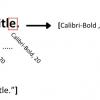Предыстория
Мне поступила задача по настройке CI. Было принято решение использовать трансформацию конфигурационных файлов и конфиденциальные данные хранить в зашифрованном виде.
Изучив документацию по шифрованию, вот что было сделано.
Key Container
В каждой ОС Windows есть наборы сгенерированных ключей. Ключ генерируется либо на учетную запись, либо на машину. Ключи сгенерированные на машину можно посмотреть по этому пути C:ProgramDataMicrosoftCryptoRSAMachineKeys. Сюда и отправиться ключ который мы создадим далее.
Создание ключа
Запускаем cmd от администратора и переключаемся в директорию с aspnet_regiis, у меня это C:WindowsMicrosoft.NETFramework64v4.0.30319
Выполняем команду
aspnet_regiis -pc "TestKey" -exp
exp — добавляется чтобы можно было экспортировать ключ в дальнейшем
TestKey — название нашего Key Container
Экспорт ключа
Команда
aspnet_regiis -px "TestKey" С:TestKey.xml -pri
TestKey — название Key Container
С:TestKey.xml — путь куда будет экспортирован файл
pri — добавить в экспорт приватный ключ
Импорт ключа
Команда
aspnet_regiis -pi "TestKey" С:TestKey.xml
TestKey — название Key Container
С:TestKey.xml — путь откуда будет экспортирован файл
Настройка прав
Чтобы ваше приложение или IIS могли работать с key container нужно настроить им права.
Делается это командой
aspnet_regiis -pa "TestKey" "NT AUTHORITYNETWORK SERVICE"
TestKey — название Key Container
NT AUTHORITYNETWORK SERVICE — кому будет выдан доступ до ключа
По умолчанию в IIS стоит ApplicationPoolIdentity для пула.
В документации Microsoft (см. ссылка 2) ApplicationPoolIdentity описан как:
-
ApplicationPoolIdentity: When a new application pool is created, IIS creates a virtual account that has the name of the new application pool and that runs the application pool worker process under this account. This is also a least-privileged account.
Поэтому чтобы IIS смог расшифровать конфиг, обязательно должна быть настроена Identity у пула на учетную запись или можно выбрать «NETWORK SERVICE» и для него дать права.
Добавление секции в config
<configProtectedData defaultProvider="RsaProtectedConfigurationProvider">
<providers>
<add name="CustomRsaProtectedConfigurationProvider"
type="System.Configuration.RsaProtectedConfigurationProvider,System.Configuration, Version=4.0.0.0, Culture=neutral, PublicKeyToken=b03f5f7f11d50a3a"
description="Uses RsaCryptoServiceProvider to encrypt and decrypt"
keyContainerName="TestKey"
cspProviderName=""
useMachineContainer="true"
useOAEP="false"/>
</providers>
</configProtectedData>
Также key container и RsaProtectedConfigurationProvider определены глобально в файлах
C:WindowsMicrosoft.NETFrameworkv4.0.30319Configmachine.config, C:WindowsMicrosoft.NETFramework64v4.0.30319Configmachine.config
<configProtectedData defaultProvider="RsaProtectedConfigurationProvider">
<providers>
<add name="RsaProtectedConfigurationProvider" type="System.Configuration.RsaProtectedConfigurationProvider,System.Configuration, Version=4.0.0.0, Culture=neutral, PublicKeyToken=b03f5f7f11d50a3a" description="Uses RsaCryptoServiceProvider to encrypt and decrypt" keyContainerName="NetFrameworkConfigurationKey" cspProviderName="" useMachineContainer="true" useOAEP="false"/>
<add name="DataProtectionConfigurationProvider" type="System.Configuration.DpapiProtectedConfigurationProvider,System.Configuration, Version=4.0.0.0, Culture=neutral, PublicKeyToken=b03f5f7f11d50a3a" description="Uses CryptProtectData and CryptUnProtectData Windows APIs to encrypt and decrypt" useMachineProtection="true" keyEntropy=""/>
</providers>
</configProtectedData>
Шифрование
Само шифрование можно сделать тремя способами
Шифрование через командную строку
aspnet_regiis.exe -pef connectionStrings С:Site -prov "CustomRsaProtectedConfigurationProvider"С:Site — путь до файла с конфигом.
CustomRsaProtectedConfigurationProvider — наш провайдер указанный в конфиге с названием key container.
Шифрование через написанное приложение
private static string provider = "CustomRsaProtectedConfigurationProvider";
public static void ProtectConfiguration()
{
Configuration config = ConfigurationManager.OpenExeConfiguration(ConfigurationUserLevel.None);
ConfigurationSection connStrings = config.ConnectionStrings;
if (connStrings != null && !connStrings.SectionInformation.IsProtected && !connStrings.ElementInformation.IsLocked)
{
connStrings.SectionInformation.ProtectSection(provider);
connStrings.SectionInformation.ForceSave = true;
config.Save(ConfigurationSaveMode.Full);
}
}
public static void UnProtectConfiguration(string path)
{
Configuration config = ConfigurationManager.OpenExeConfiguration(path);
ConfigurationSection connStrings = config.ConnectionStrings;
if (connStrings != null && connStrings.SectionInformation.IsProtected && !connStrings.ElementInformation.IsLocked)
{
connStrings.SectionInformation.UnprotectSection();
}
}
Велосипед
Когда есть трансформация файлов и нужно зашифровать секции отдельно от всего конфига, то подойдет только самописный вариант. Мы создаем экземпляр класса RsaProtectedConfigurationProvider, берем узел из xml и шифруем его отдельно, затем заменяем в исходном xml узел на наш зашифрованный и сохраняем результат.
public void Protect(string filePath, string sectionName = null)
{
XmlDocument xmlDocument = new XmlDocument { PreserveWhitespace = true };
xmlDocument.Load(filePath);
if (xmlDocument.DocumentElement == null)
{
throw new InvalidXmlException($"Invalid Xml document");
}
sectionName = !string.IsNullOrEmpty(sectionName) ? sectionName : xmlDocument.DocumentElement.Name;
var xmlElement = xmlDocument.GetElementsByTagName(sectionName)[0] as XmlElement;
var config = new NameValueCollection
{
{ "keyContainerName", _settings.KeyContainerName },
{ "useMachineContainer", _settings.UseMachineContainer ? "true" : "false" }
};
var rsaProvider = new RsaProtectedConfigurationProvider();
rsaProvider.Initialize(_encryptionProviderSettings.ProviderName, config);
var encryptedData = rsaProvider.Encrypt(xmlElement);
encryptedData = xmlDocument.ImportNode(encryptedData, true);
var createdXmlElement = xmlDocument.CreateElement(sectionName);
var xmlAttribute = xmlDocument.CreateAttribute("configProtectionProvider");
xmlAttribute.Value = _encryptionProviderSettings.ProviderName;
createdXmlElement.Attributes.Append(xmlAttribute);
createdXmlElement.AppendChild(encryptedData);
if (createdXmlElement.ParentNode == null
|| createdXmlElement.ParentNode.NodeType == XmlNodeType.Document
|| xmlDocument.DocumentElement == null)
{
XmlDocument docNew = new XmlDocument
{
InnerXml = createdXmlElement.OuterXml
};
docNew.Save(filePath);
}
else
{
xmlDocument.DocumentElement.ReplaceChild(createdXmlElement, xmlElement);
xmlDocument.Save(filePath);
}
}
Ссылки
1. docs.microsoft.com/en-us/previous-versions/53tyfkaw
2. support.microsoft.com/en-za/help/4466942/understanding-identities-in-iis
Автор: ElenaF



